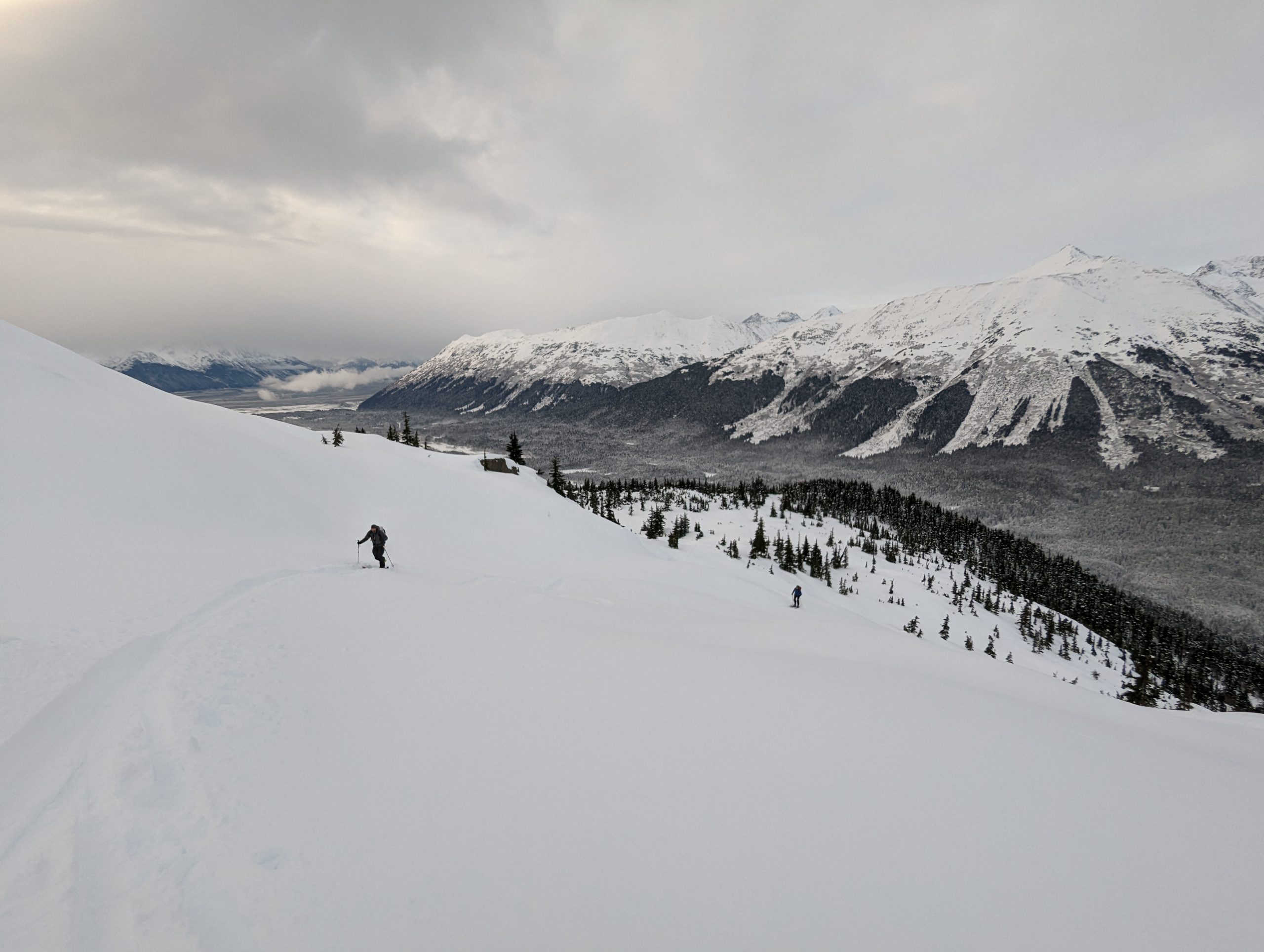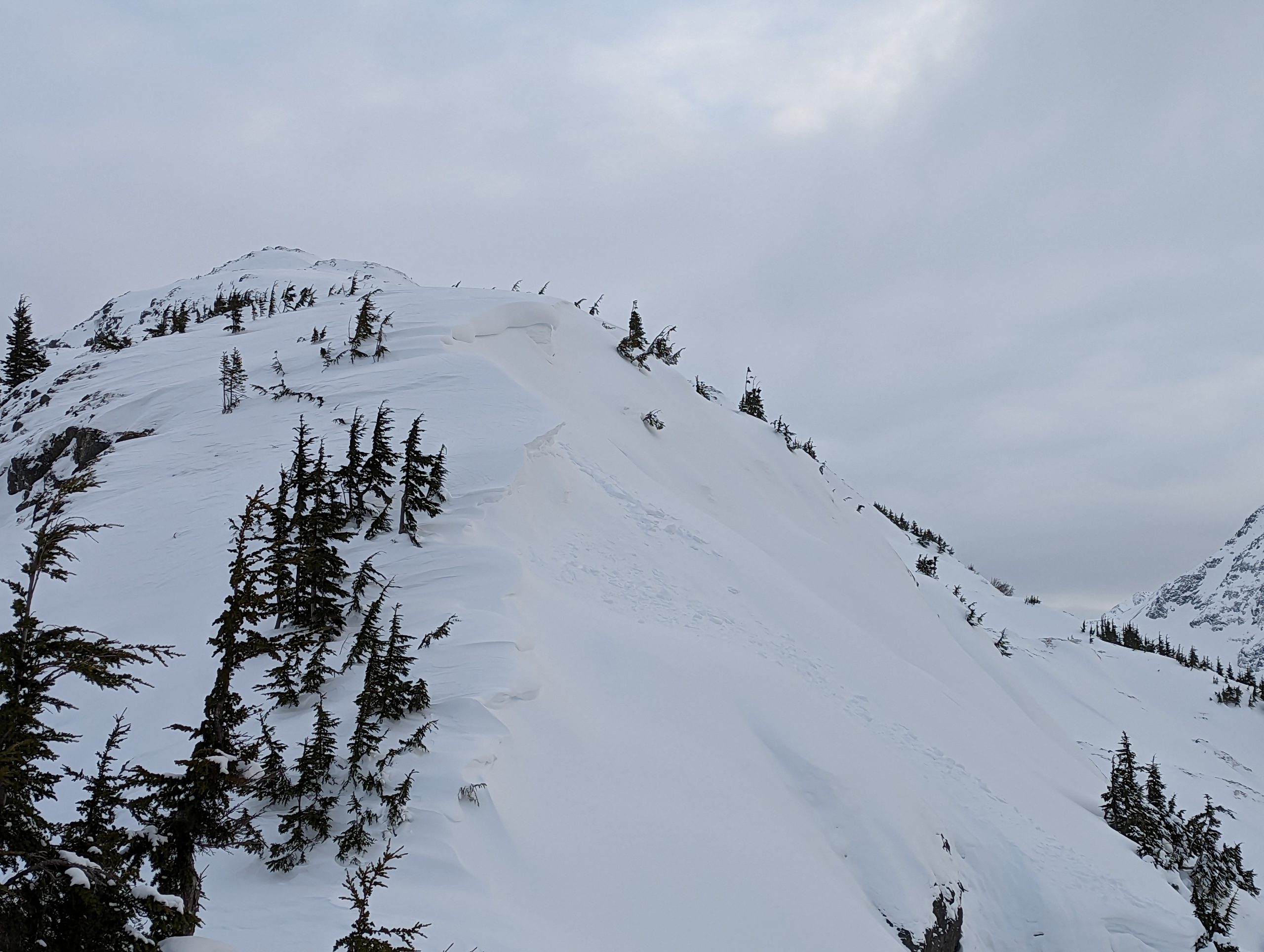Turnagain Pass
|
|
The avalanche danger is MODERATE above 1000′ today. It is possible for a person to trigger an avalanche on a layer of facets buried 2-4′ deep. Wind slabs 2-3′ deep in areas exposed to strong NE winds are also possible for human triggering and most likely at upper elevations. Below 1000′ the avalanche danger is LOW.
SEWARD/LOST LAKE: The current NE outflow winds are favoring this area and it is more likely to find wind slab avalanches at upper elevations. Keep an eye out for signs of recent wind loading, shooting cracks, or hollow feeling snow to identify and avoid wind slabs, especially along ridgelines and cross loaded gullies.
Become a Member in December! If you haven’t done so already, please consider becoming a member of our non-profit Friends group. Memberships start at just $20, and every member who joins or renews will be entered to win one of the fabulous prizes from our sponsors. This could be that Holiday gift idea you’ve been waiting for! Click here for more info.



